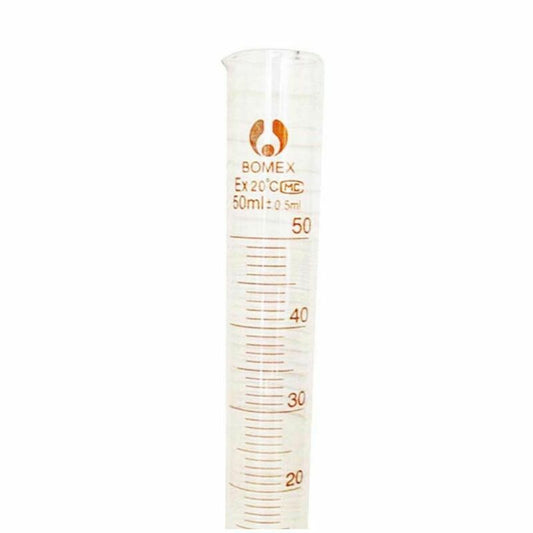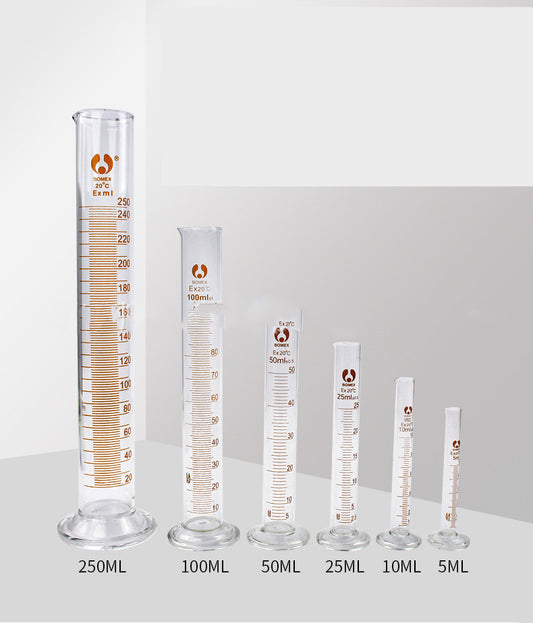Collection: Cylinders
Lab cylinders are a type of cylindrical glassware commonly used in laboratory settings to measure and transfer precise volumes of liquids. They are typically made of borosilicate glass or other materials that are resistant to heat, chemicals, and thermal shock.
Lab cylinders come in a variety of sizes, ranging from small capacities of a few milliliters to larger sizes with capacities of several liters. They typically have a cylindrical shape with a narrow spout at the top and graduations marked along the side, allowing for accurate measurements of liquid volumes.
The accuracy of lab cylinders can be affected by several factors, including the temperature of the liquid being measured, the angle at which the cylinder is viewed, and the presence of meniscus, a slight curvature of the liquid surface caused by surface tension. To ensure accurate measurements, lab cylinders should be viewed at eye level, and readings should be taken at the bottom of the meniscus.
Lab cylinders are commonly used in many laboratory procedures, including titrations, dilutions, and mixing of solutions. They are also often used in educational settings to teach students about measuring liquid volumes and the principles of volumetric analysis.
Cylinders can be made from a wide range of materials depending on their intended application. Some common materials used to manufacture cylinders include:
-
Metals: Cylinders made from metals such as aluminum, steel, and titanium are often used in industrial applications such as hydraulic systems, pneumatic systems, and gas storage. These cylinders are known for their durability and ability to withstand high pressure and extreme temperatures.
-
Plastics: Cylinders made from plastics such as PVC, HDPE, and polycarbonate are lightweight, corrosion-resistant, and often used in chemical and pharmaceutical industries. They are also commonly used in laboratory settings as plastic cylinders are less likely to break or shatter.
-
Glass: As mentioned earlier, lab cylinders are often made of borosilicate glass, which is resistant to heat and chemicals. Other types of glass cylinders, such as quartz or sapphire, are often used in specialized applications where optical clarity and high temperature resistance are required.
-
Ceramics: Cylinders made from ceramics such as alumina or zirconia are used in high-temperature applications such as kilns and furnaces. These materials are known for their excellent thermal and chemical resistance.
In summary, cylinders can be made from a variety of materials depending on the intended application, with each material having its unique properties and advantages.










